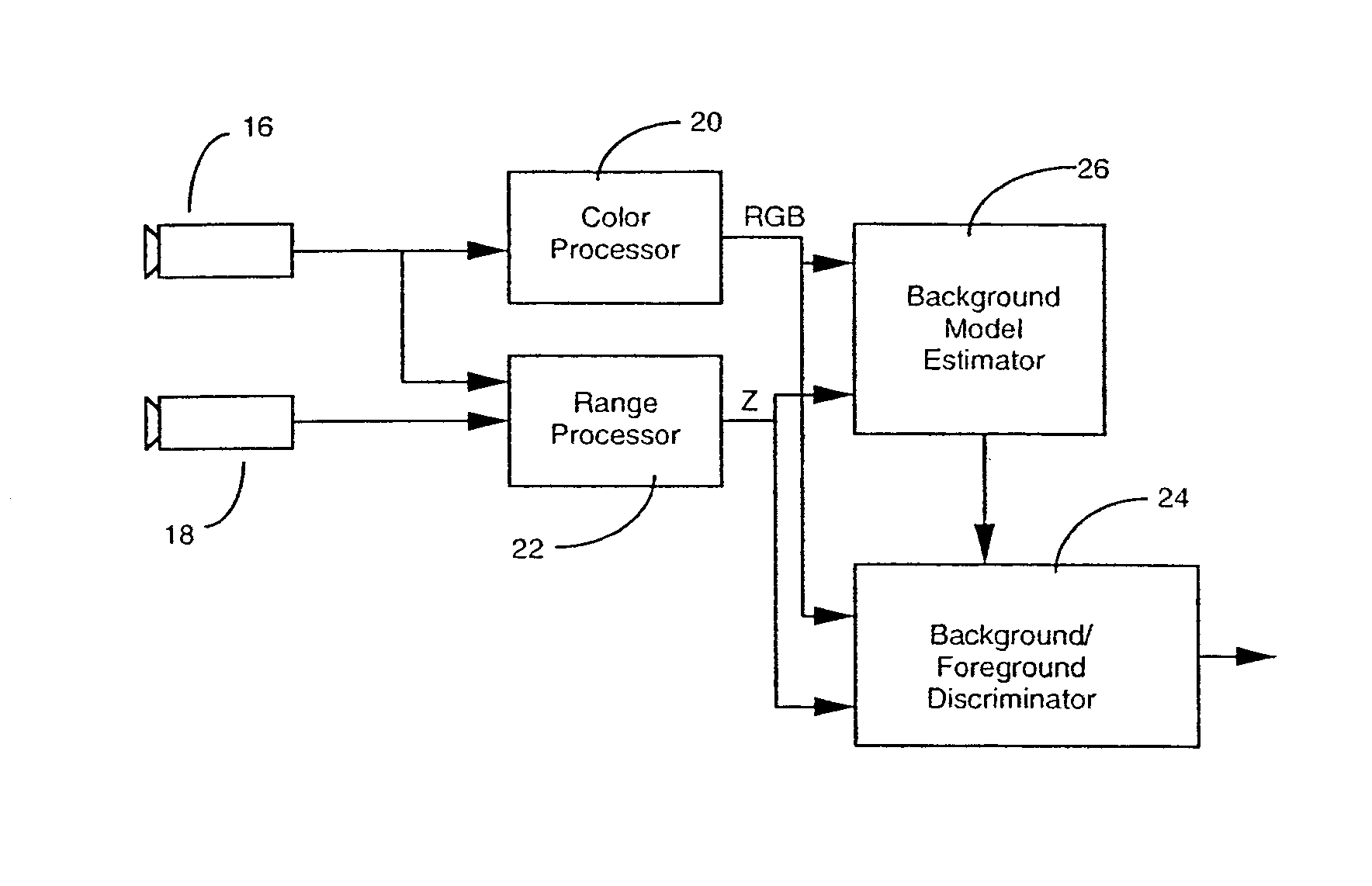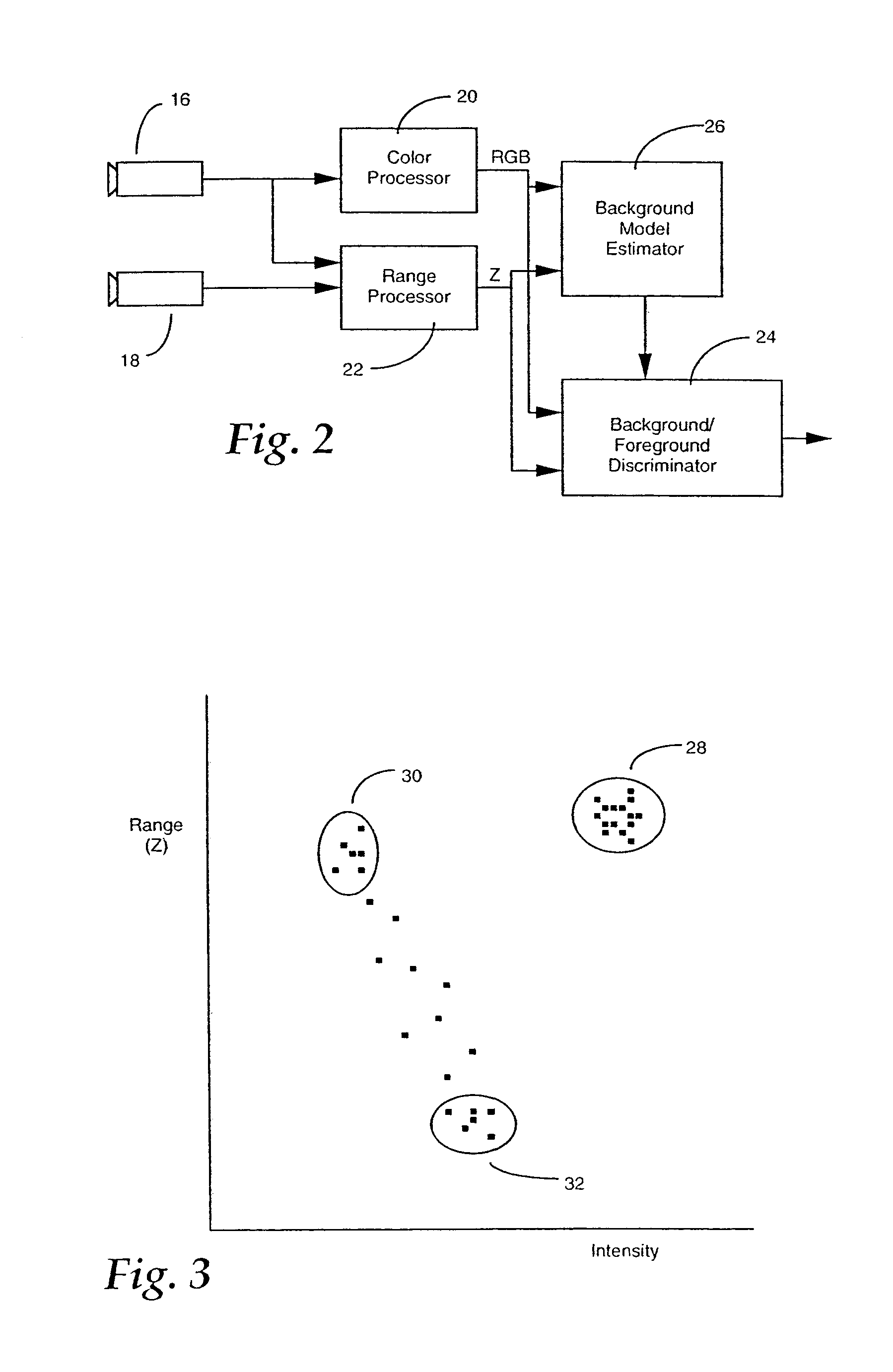Background estimation and segmentation based on range and color
a segmentation and range technology, applied in the field of computer vision, can solve the problems of not being properly identified as portions of foreground objects, affecting the color value of background objects within the region of shadows, and significant limitations of this segmentation approach, and achieve the effect of reliable identification of foreground objects
- Summary
- Abstract
- Description
- Claims
- Application Information
AI Technical Summary
Benefits of technology
Problems solved by technology
Method used
Image
Examples
Embodiment Construction
[0016]The ability to distinguish between dynamic foreground objects in a scene and the static background regions of the scene has a number of useful applications. One such application is the detection of people within an area. FIGS. 1a-1c are a sequence of related images which depict individuals moving within a room having stationary objects, such as tables and other pieces of furniture. The items of furniture and the walls represent elements of a background scene, while the people constitute foreground objects whose position and movements are to be detected. Even though one of the tables is foremost in the scene, it is considered to be a background object, since it is a stationary object within the scene.
[0017]A system for distinguishing between the foreground objects and the background elements in each image of the sequence is illustrated in the block diagram of FIG. 2. Images of the scene are captured in electronic form by a pair of digital video cameras 16, 18 which are displace...
PUM
 Login to View More
Login to View More Abstract
Description
Claims
Application Information
 Login to View More
Login to View More - R&D
- Intellectual Property
- Life Sciences
- Materials
- Tech Scout
- Unparalleled Data Quality
- Higher Quality Content
- 60% Fewer Hallucinations
Browse by: Latest US Patents, China's latest patents, Technical Efficacy Thesaurus, Application Domain, Technology Topic, Popular Technical Reports.
© 2025 PatSnap. All rights reserved.Legal|Privacy policy|Modern Slavery Act Transparency Statement|Sitemap|About US| Contact US: help@patsnap.com



